Table of Contents
It really matters what shoes you choose for run, especially if running is a daily part of your training. Choosing the right running shoes is very important because with the right sneakers you can prevent pain and unpleasant injuries. Together with Footshop, we looked deeper at what running sneakers are right for you.
5 tips for choosing athletic shoes
There are a number of athletic shoes on the market designed for running. Therefore, we have prepared 5 tips to help you choose the right athletic shoes depending on several factors.
1. Choose shoes designed for running
Running shoes may at first glance look like ordinary sneakers for everyday wear. But the difference between them can be found in detail. Running shoes include special technologies and design elements that are designed specifically for running activities. They are designed to match your foot typology, running style, and prevent injuries. Running sneakers usually contain special cushioning technologies and their soles are designed for different terrains. [1] [2]
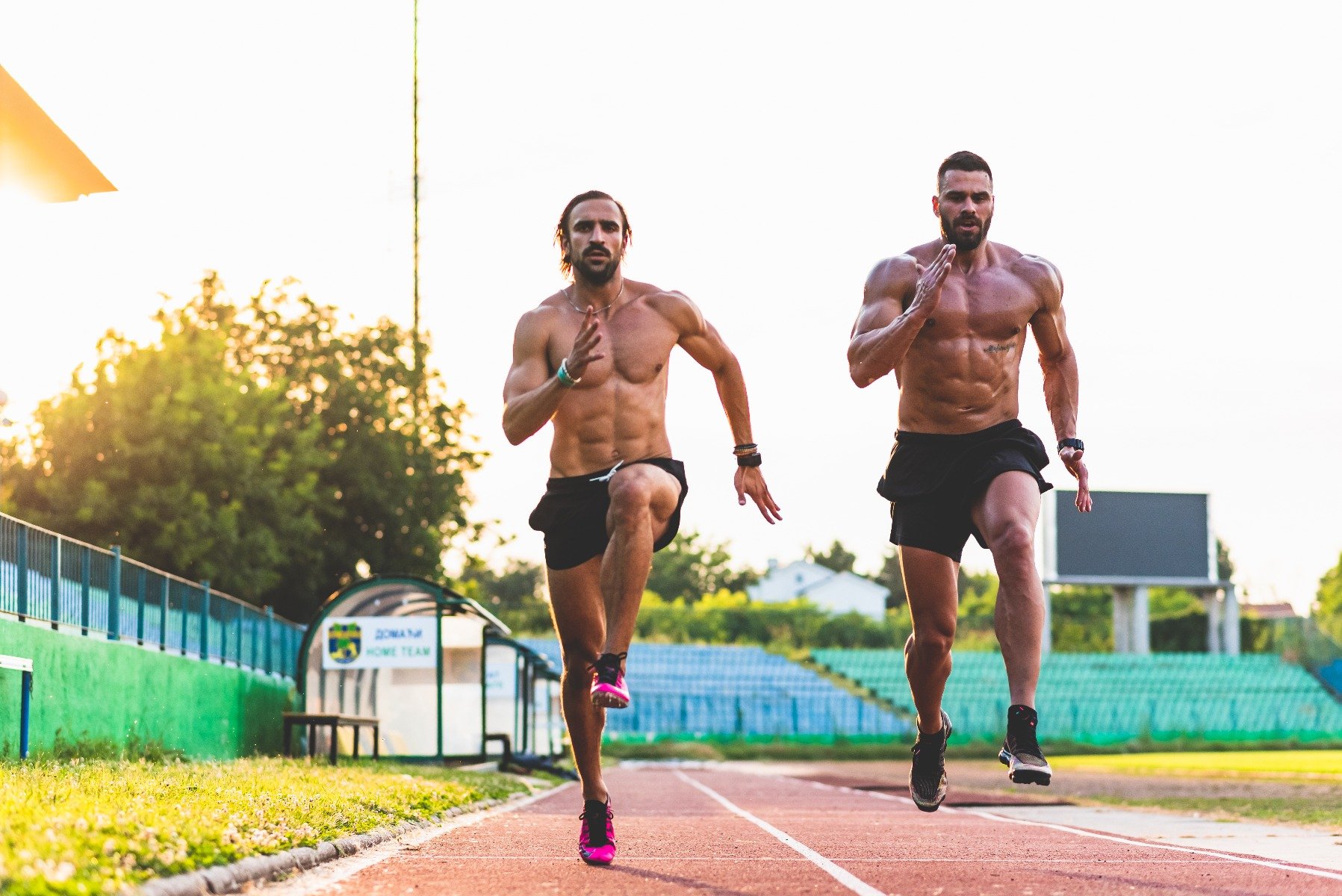
You might be interested in these products:
2. Determine your type of arch of the foot
Finding out if you have a normal arch, a high arch of your foot, or suffer from flat feet can help you choose the right athletic shoes. If you choose the wrong type of sneakers for your type of foot, it could cause damage to your foot and other injuries. The most common are plantar fascitis, which causes stabbing pain in the heel, or so-called runner’s knee, which is characterized by blunt pain around the upper part of the knee joint or Achilles tendon inflammation. [3] [5]
Therefore, try to determine your arc type with a “wet test” that takes only a few seconds! Prepare a pool of water and cardboard in a size so you can comfortably stand on it with both feet. Soak your feet, let them drip for a while and stand upright on the cardboard. After a few seconds, step out of the carton and determine your arch type based on the wet feet of the foot pressed on the carton. [3] [5] You can compare the footprints with our picture below. It shows 3 types of arches and their typical features.
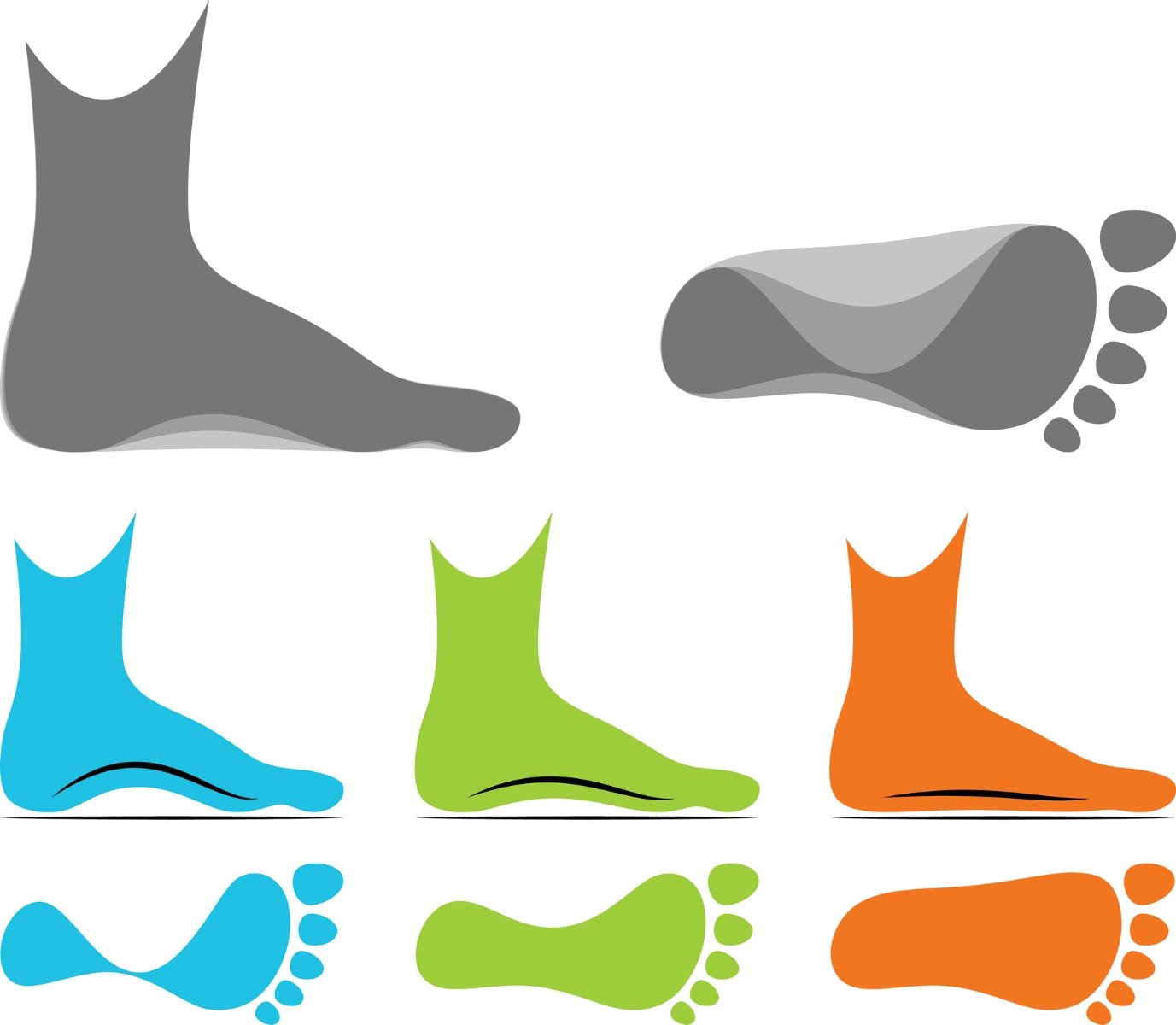
1. High arc
If you have a high arc, your fingerprint will only show the front and back of the foot, as is the case with the blue image. You will see a very narrow, even no connection between the heel and the toe. When your feet hit the ground, they absorb shock and need more cushioning. For this reason, shoes with good cushioning and not very firm structure are suitable for you. [3] [4]
2. Normal arc
If you see a footprint similar to the green step in the picture, and therefore your foot has a distinct curve that connects the heel to the toe, you have a normal arc. The curve is approximately half your foot and the arches are at the correct height to absorb and distribute the impact of walking and other physical activities. What will make you happy is the fact that the vast majority of running shoes is suitable for this type of foot. [3] [5]
3. Flat foot
If your footprint is reminiscent of the orange step in the picture, you have flat feet. Your wet outline looks like a full foot, so there is no curve between the heel and the toe. This causes your foot to lean more inwards as you walk, and instead of the outer edge of the foot, you are straining the inner leg. However, this way of walking is not healthy for your knees and legs as it can cause plantar fascitis. This causes stinging pain in the heel area and is most commonly found in runners, obese people and those who wear poorly supported shoes. If you have flat feet, be sure to use sneakers with thick soles and lace-ups that limit foot flexibility. [3] [6]
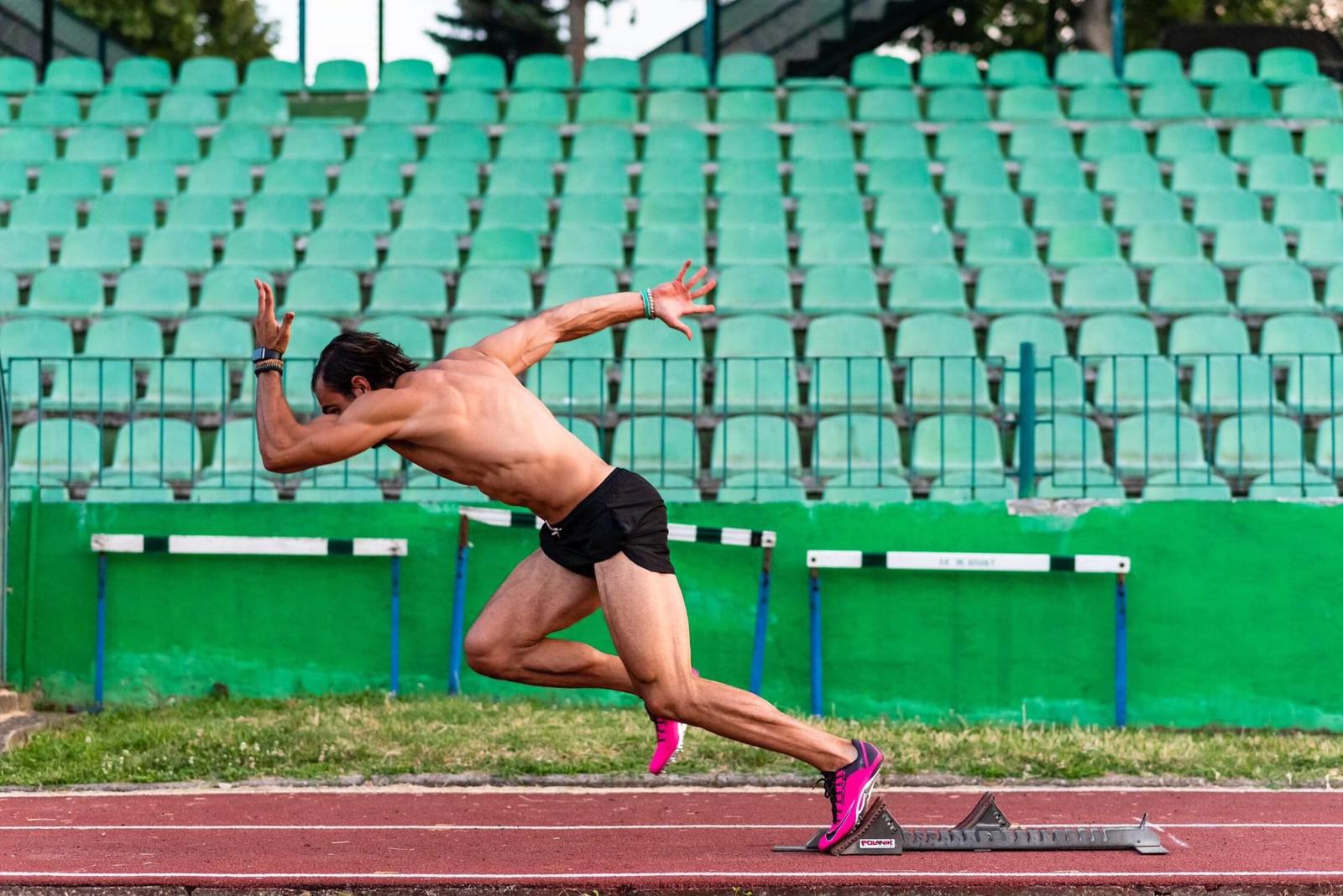
3. Find out the pronation of your foot
Pronation is the rotation of the medial bones in the midtarsal region of the foot inward and downward so that in walking the foot tends to come down on its inner margin. In normal and normal pronation, the foot touches the ground first with the outer edge of the foot and then tilts slightly inwards. Determining your type of pronation will help you find comfortable running shoes. How to do it? [7] [8]
- Neutral pronation: occurs when the foot rotates slightly inwards from the outer edge of the heel through the forefoot and toe. The foot lands on the outside of the heel and then rotates inward.
It occurs with the type of foot: normal arch
- Severe pronation: the foot is rotated excessively inwards, from the heel to the middle of the foot. In case of excessive pronation, the knee joint tends to bend to the inside.
It occurs with the type of foot: flat feet
- Supination: the outer side of the heel strikes the ground at an increased angle, causing a great surge on the heel and toe. In this case, the knees, tendons and the Achilles’ heel are excessively stressed.
It occurs with the type of foot: high arches [8]
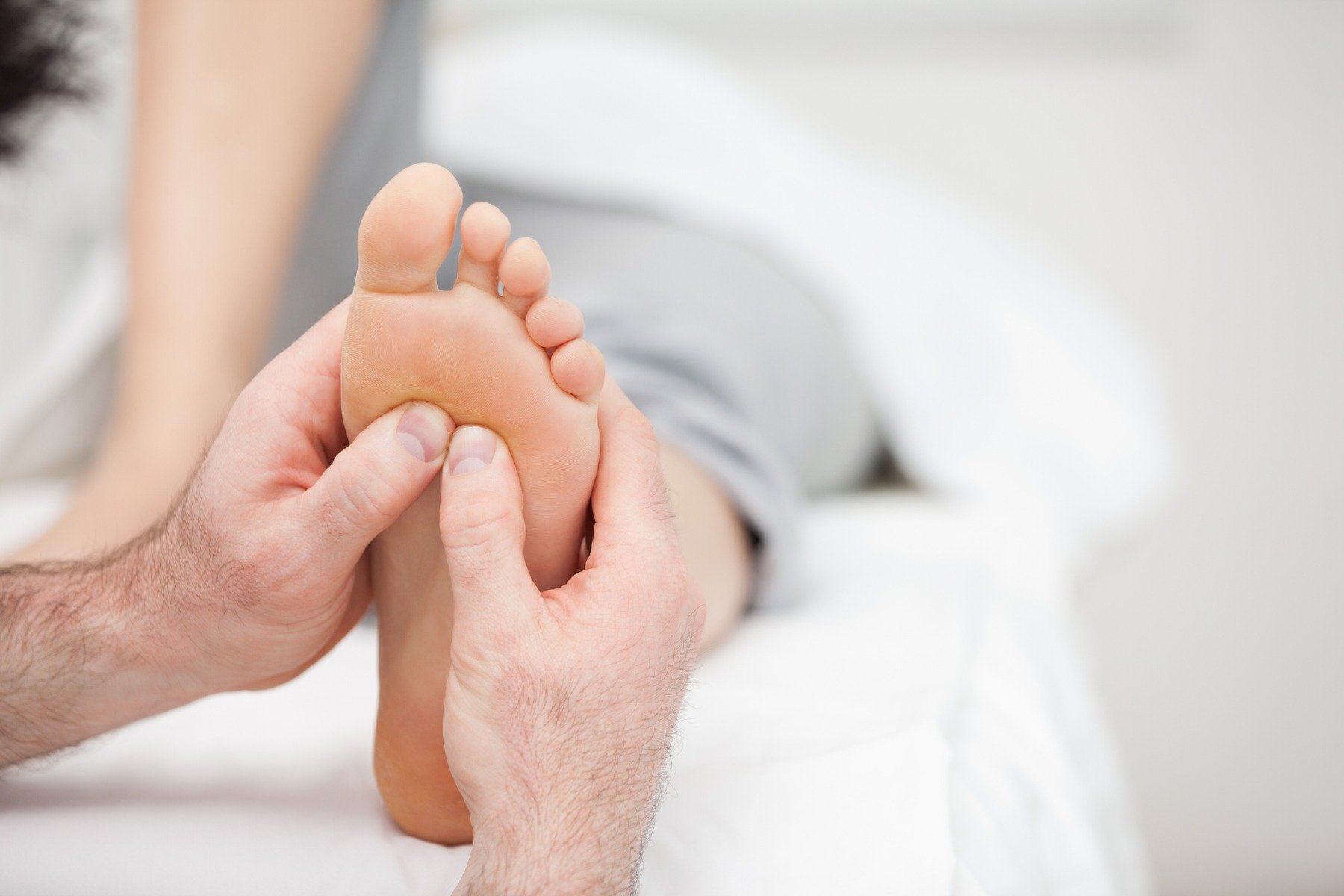
Once you know the type of foot and pronation, you can easily determine which running shoes are right for you. These are ideal 3 types of shoes based on the type and movement of the foot:
1. Motion control shoes
Motion control shoes are recommended for runners with flat feet and severe foot pronation. They are usually firmer than classic running shoes and have a wide sole. [10] This helps to reduce excessive movement during walking and to neutralize pain when the foot falls to the ground. This type of running shoes is also useful in reducing patellofemoral pain or knee pain, which is one of the most common diseases among runners. [9]
One study compared motion control shoes with neutral shoes in the area of tibia rotation. Movement control shoes have been found to actually provide support that reduces tibia rotation, and this reduces the risk of injury. [11]
2. Stable footwear
Stable footwear is usually recommended for runners with normal arch or flat feet. These sneakers are an excellent combination of a soft interliner with a stronger support, but still allow the foot to move more. They thus prevent excessive pronation by offering greater arch and ankle support while walking. Most of the running shoes on the market fall into the category of stable shoes. [7] [12]
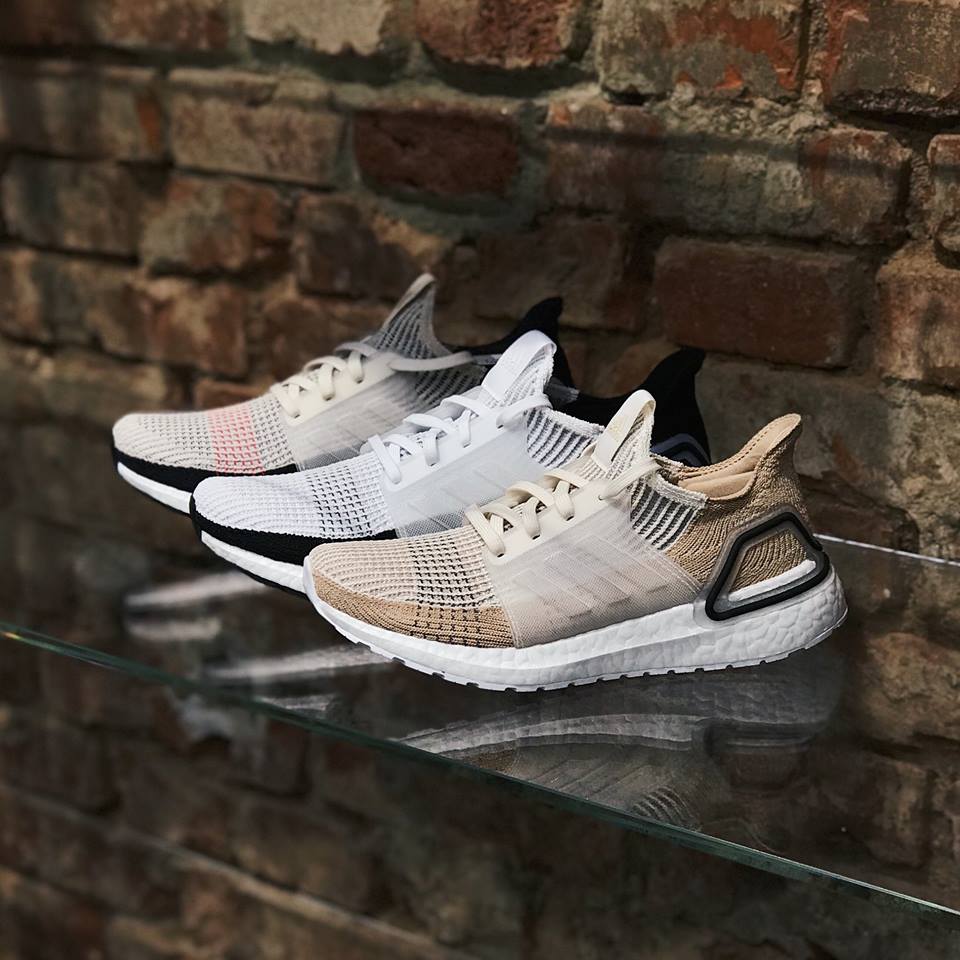
3. Cushioned shoes
Cushioned shoes are usually recommended for runners with supination and a high foot type, as they effectively cushion impact when the foot hits the ground. Generally, cushioned shoes are made with extra cushioning in the heel and toe area. The impact of the foot on the ground is thus dispersed and the middle part of the foot is also engaged. [13] [14]
4. Choose sneakers based on the running surface
You are surely not surprised that you can run in any weather and on any surface. It doesn’t matter what you wear because different terrain requires different sports shoes. The following lines will tell you what shoes to choose depending on the running surface.
Grass
Running on the grass is different from running on the sidewalk. The grass is softer, which ensures a more subtle impact of the foot, but as a result, a higher rebound force is required. Running on grass will therefore be slower than running on hard ground.
The disadvantage of a grass surface is also a higher risk of injury as the foot tends to move more in the shoe on soft ground. Running shoes with good arch support to protect the plantar fascia and with cushioning to help stabilize the heel are therefore suitable. The tops of the running shoes suitable for the grass surface are therefore made of a durable material such as leather. However, this factor can also slow down your running performance as the skin is one of the less flexible materials. [15] [16]
![The disadvantage of a grass surface is also a higher risk of injury as the foot tends to move more in the shoe on soft ground. Running shoes with good arch support to protect the plantar fascia and with cushioning to help stabilize the heel are therefore suitable. The tops of the running shoes suitable for the grass surface are therefore made of a durable material such as leather. However, this factor can also slow down your running performance as the skin is one of the less flexible materials. [15] [16] An excellent alternative for running on a grassy surface are all leather Reebok CI Lthr Porcelain, which are also suitable for rainy weather and wet slippery surfaces. 5 tips for choosing athletic shoes](https://wpstatic.gymbeam.com/blog/wp-content/uploads/mageblog/iStock-1140452471.jpg)
Sand
Running on sandy terrain requires more mechanical work. Sand has an unpredictable surface, so you never know when your foot will dig deeper into the sand. So your tendons and muscles consume much more energy to maintain stability than when running on a flat, even surface. [16] [17]
On the beach, many athletes and endurance runners prefer running without shoes. It allows the natural movement of the legs and has many positive health effects. These include less dorsiflexion of the feet and ankles in contact with the surface, shorter contact time with the ground, and increased walking frequency. Keep in mind, however, that running on a beach without shoes requires experience, as it can lead to plantar fasciitis, ankle sprain or even Achilles tendon injury. [17] [18]
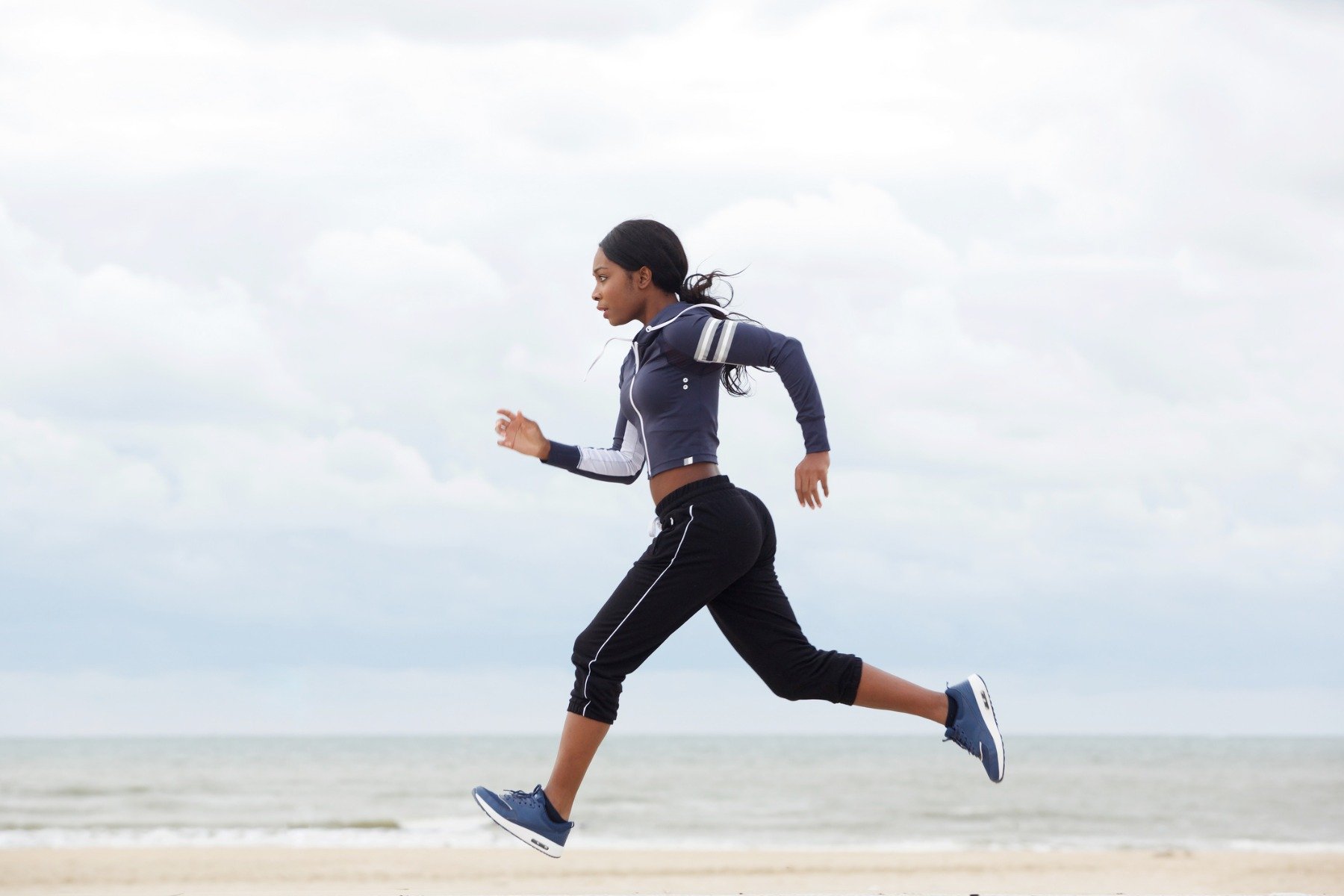
Asphalt road
The most common surface for running is asphalt or concrete road. It is a surface that can be found around every corner, but running on it is a heavy burden for the human body. Running shoes for roads are therefore designed to be lightweight and additionally protect your foot from impact on hard ground. They have a cushioned sole that helps to quickly and painlessly reflect from the surface. At the same time, the sole is rougher to prevent it from slipping on a smooth surface. [19] [20] This type of sneaker is one of the most affordable running shoes depending on the surface you are running on.
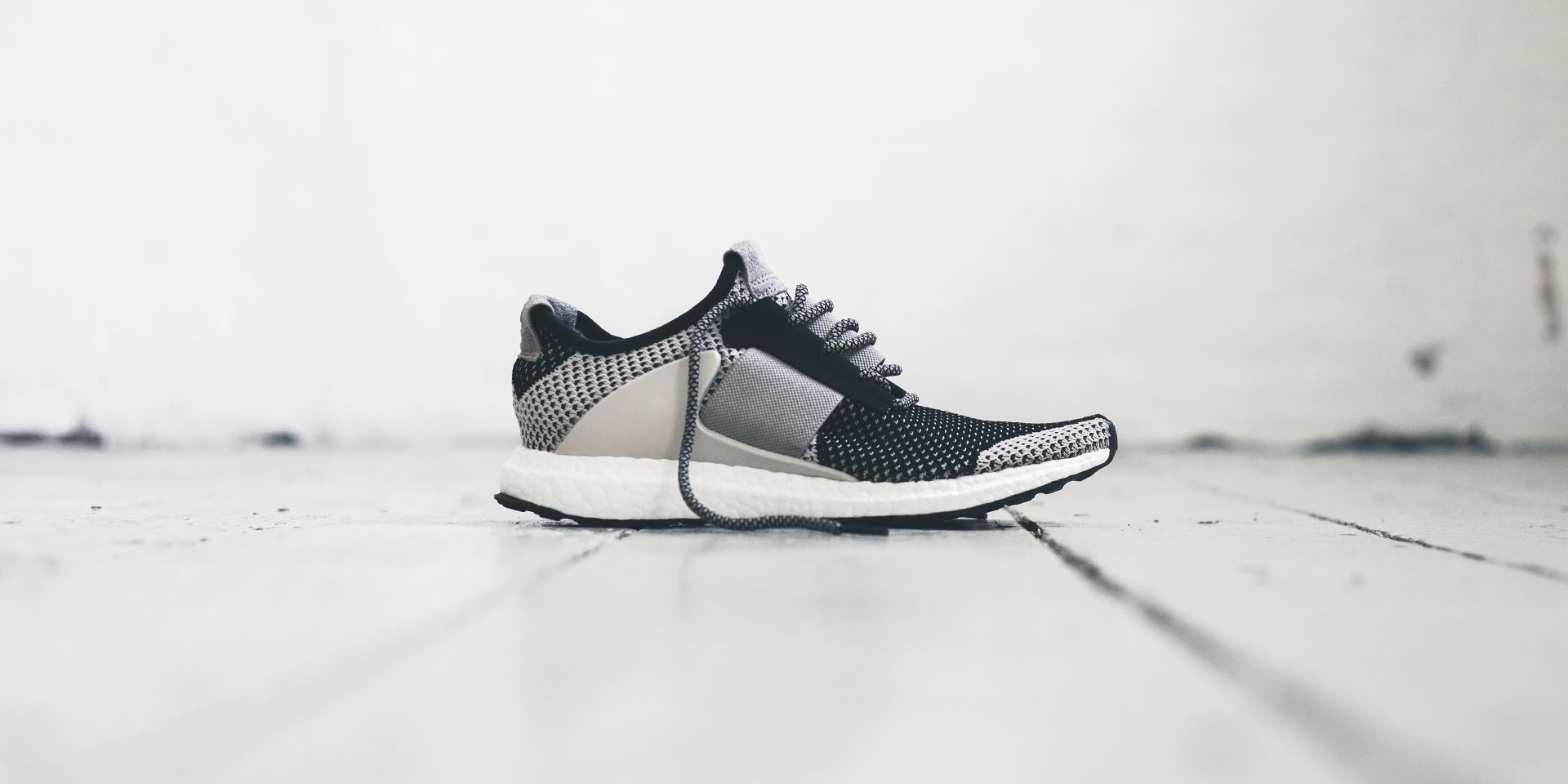
Rugged terrain
Running shoes for outdoor running on mountains and hills are usually heavier than classic road running shoes. [21] [22] It is designed to protect the foot from injuries that threaten it on uneven and rugged terrain. The sole of this sneaker is adapted to protect against stones, tree roots and other obstacles that the runner may encounter in nature. [23]
Trail shoes are generally considered to be a mixture of running and hiking shoes. The best-known model from the Adidas workshop is the Mountaineering Terrex sneakers, which provide sufficient stability and also perform anti-slip function. [22] [23]
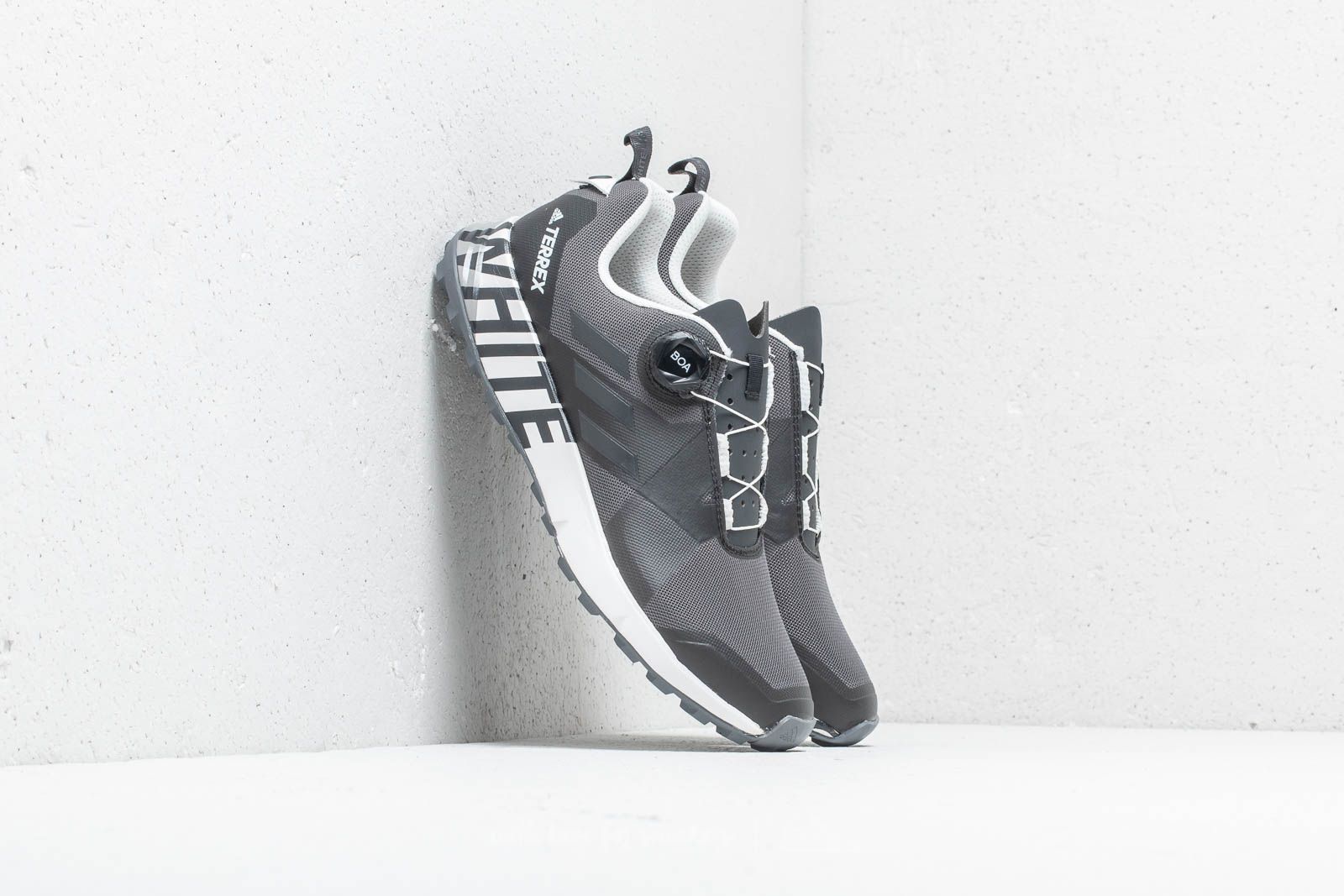
5. Keep in mind the design of running shoes
The priority of today’s runners is to have not only functional running shoes, but especially stylish sneakers pleasing to the eye. An example of perfect design and functionality is the Reebok Daytona DMX model. For Air enthusiasts, the Nike Air or Nike Air Vapormax are a great choice. These are running shoes suitable for any recreational runner who enjoys the quality, functionality and appearance of sneakers.
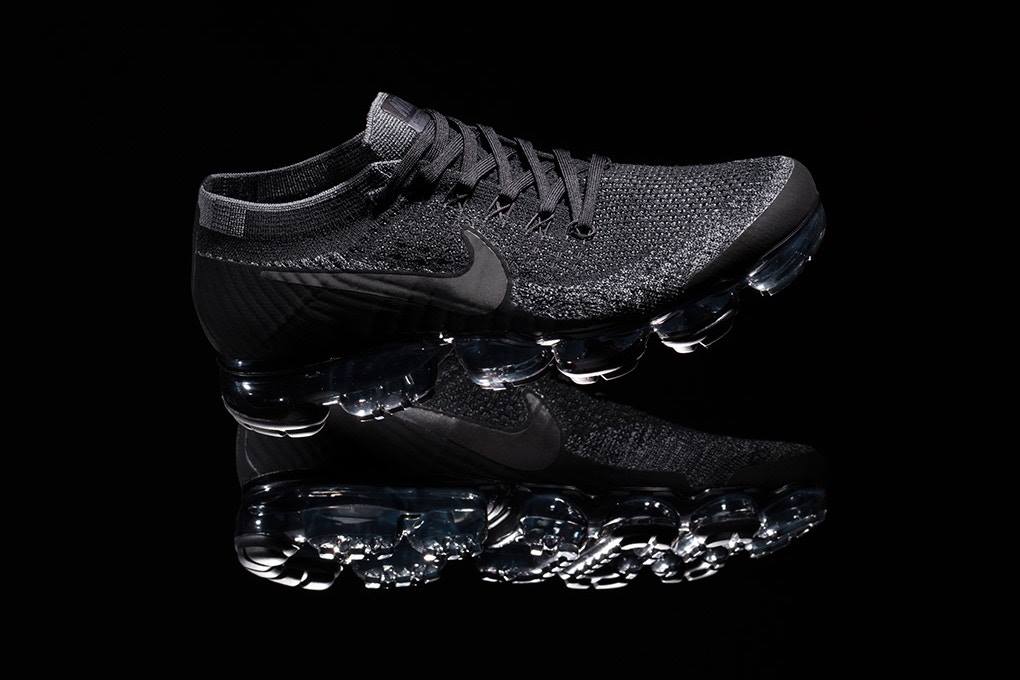
Photos Source: website of Footshop, Facebook of Footshop
So, did we advise you on choosing running shoes? Let us know in the comment, and if you liked our article, be sure to support it by liking and sharing.
[1] Christina Frank - 10 Tips for Choosing Athletic Shoes – https://www.webmd.com/fitness-exercise/features/how-choose-athletic-shoes#1
[2] HOW TO CHoOSE THE RIGHT SHOES FOR YOU – https://www.runnersneed.com/expert-advice/gear-guides/choosing-the-right-running-shoes.html
[3] Learn Your Foot Arch Type With The Wet Test – https://heelthatpain.com/foot-arch-type-test/
[4] Daniel López-López, Juan Manuel Vilar-Fernández, Gonzalo Barros-García, Marta Elena Losa-Iglesias, Patricia Palomo-López, Ricardo Becerro-de-Bengoa-Vallejo and Cesar Calvo-Lobo - Foot Arch Height and Quality of Life in Adults: A Strobe Observational Study – https://www.ncbi.nlm.nih.gov/pmc/articles/PMC6069419/
[5] Christopher Kevin Wong, PhD, Rich Weil, MEd and Emily de Boer, PT, DPT - Standardizing Foot-Type Classification Using Arch Index Values – https://www.ncbi.nlm.nih.gov/pmc/articles/PMC3396578/
[6] Se-Yeon Park, Hyun-Seok Bang and Du-Jin Park - Potential for foot dysfunction and plantar fasciitis according to the shape of the foot arch in young adults – https://www.ncbi.nlm.nih.gov/pmc/articles/PMC6028224/
[7] Qichang Mei, Yaodong Gu, Liangliang Xiang, Julien S. Baker and Justin Fernandez - Foot Pronation Contributes to Altered Lower Extremity Loading After Long Distance Running – https://www.ncbi.nlm.nih.gov/pmc/articles/PMC6540596/
[8] PRONATION GUIDE & SHOE TYPES – https://www.newbalance.co.uk/exp-pages/exp-pronation.html
[9] Carolyn M. Hettrich, MD, MPH Daniel Liechti, BS - Patellofemoral Pain Syndrome – https://orthoinfo.aaos.org/en/diseases--conditions/patellofemoral-pain-syndrome/
[10] AthleticFootGuru - The Best Motion Control Running Shoes! – https://theathleticfoot.com/activity/best-motion-control-running-shoes/
[11] Laurent Malisoux, Nicolas Chambon, Nicolas Delattre, Nils Gueguen, Axel Urhausen and Daniel Theisen - Injury risk in runners using standard or motion control shoes: a randomised controlled trial with participant and assessor blinding – https://www.ncbi.nlm.nih.gov/pmc/articles/PMC4853529/
[12] Elizabeth Quinn - The 5 Best Stability Running Shoes of 2019 – https://www.verywellfit.com/best-stability-running-shoes-3120557
[13] Juha-Pekka Kulmala, Jukka Kosonen, Jussi Nurminen and Janne Avela - Running in highly cushioned shoes increases leg stiffness and amplifies impact loading – https://www.ncbi.nlm.nih.gov/pmc/articles/PMC6269547/
[14] These 10 Cushioned Running Shoes Are Like Pillows for Your Feet – https://www.runnersworld.com/gear/a20865760/best-cushioned-running-shoes/
[15] Jo Jackson - The Best Shoes for Running on Grass – https://www.livestrong.com/article/352764-the-best-shoes-for-running-on-grass/
[16] Tessutti V1, Ribeiro AP, Trombini-Souza F, Sacco IC. - Attenuation of foot pressure during running on four different surfaces: asphalt, concrete, rubber, and natural grass. – https://www.ncbi.nlm.nih.gov/pubmed/22897427
[17] Samantha Lefave - How Running on the Beach Can Boost Your Performance – https://www.runnersworld.com/training/a20967432/running-on-the-beach-benefits/
[18] Kyle P. Perkins, William J. Hanney - The Risks and Benefits of Running Barefoot or in Minimalist Shoes. – https://www.ncbi.nlm.nih.gov/pmc/articles/PMC4212355/
[19] JHow to choose the best road running shoes – https://www.on-running.com/en-gb/articles/how-to-choose-the-best-road-running-shoes
[20] Ben Hobson and Jane McGuire - Best running shoes 2019: the best men's and women's running trainers, tested in the lab and on the road – https://www.runnersworld.com/uk/gear/shoes/a776671/best-running-shoes-2019/
[21] Antonini Philippe Roberta, Rochat Nadège, Crettaz Von Roten Fabienne and Hauw Denis - The Relationship between Trail Running Withdrawals and Race Topography – https://www.ncbi.nlm.nih.gov/pmc/articles/PMC5969028/
[22] Michael Clarke - Trail Running Shoes 101 – https://www.active.com/running/articles/trail-running-shoes-101
[23] Tryntsje Fokkema, Robert-Jan de Vos, John M van Ochten, Jan AN Verhaar, Irene S Davis, Patrick JE Bindels, Sita MA Bierma-Zeinstra and Marienke v - Preventing running-related injuries using evidence-based online advice: the design of a randomised-controlled trial – https://www.ncbi.nlm.nih.gov/pmc/articles/PMC5530119/


Add a comment